Lake Superior Coaster Brook Trout
Coaster brook trout, (Salvelinus fontinalis), are a form of brook trout that spends part of its life in relatively sheltered nearshore waters of Lake Superior. Returning to the streams in fall, these native char are highly sought after with a voracious appetite to match their bold colors.
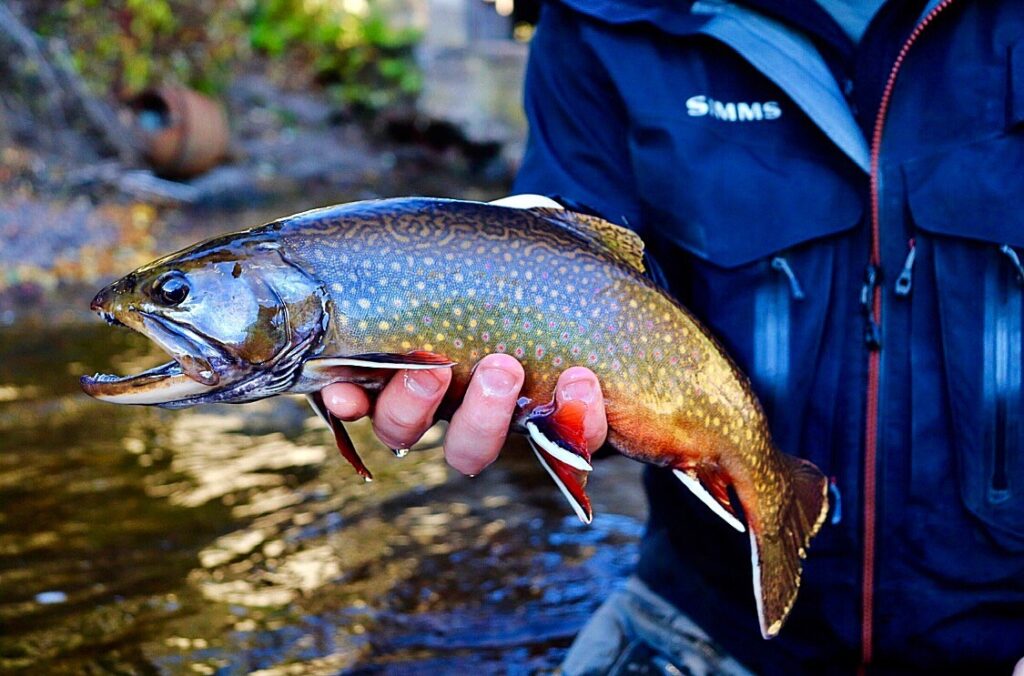
Coaster: What’s in a name?
According to a 1996 report prepared for the Lake Superior Technical Committee, early European settlers to the Lake Superior area called the large form of Lake Superior native brook trout a “coaster” because of its preference for the shoreline habitat of Lake Superior.
Definitions for coasters varied at the time of the 1996 report. A significant problem then as now, was that coaster brook trout were greatly reduced or eliminated from most areas of Lake Superior before scientific data about their populations could be collected. Without a known “pure coaster” sample, and no genetic testing and analysis tools available, there was no way to begin to define what constituted a coaster, and whether they were truly distinct from their stream-dwelling cousins. As such, the 1983 Becker definition for coaster brook trout adopted by the LSTC became, “any brook trout that spends part of its life in Lake Superior”.
Historically, most of Lake Superior’s 3,000 miles of shoreline and tributary streams supported fishable coaster populations. In the mid-1800’s the “rock trout” and “speckled trout” fisheries, which were other local names for coasters depending on which side of the Canadian border you fished, attracted anglers from around the world. Unregulated fishing decimated coaster stocks, and in-stream habitat loss due to wide-scale logging and wildfires further reduced numbers and prevented stocks from recovering.

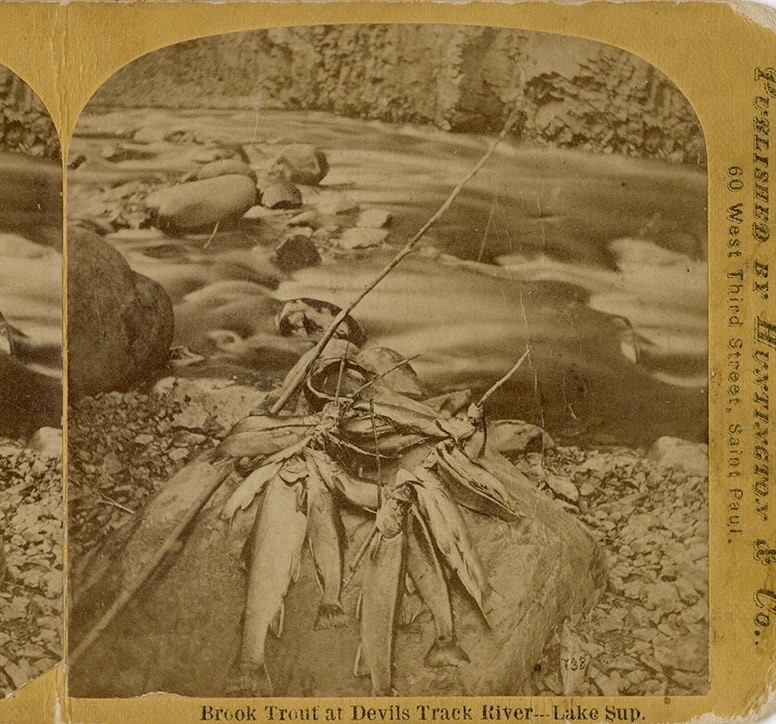
By the mid-1900s only a handful of potential remnant stocks still existed in a small number of Ontario tributaries, at Isle Royale, and possibly some streams along Wisconsin’s Bayfield Peninsula as well as Michigan’s Upper Peninsula.
Conservation and reintroduction efforts are underway. The Red Cliff and Grand Portage Anishinaabe First Nations are leading efforts on the South and North Shores of Lake Superior respectively. The Genoa National Fish Hatchery has been cooperating with the U.S. Fish and Wildlife Service’s Iron River National Fish Hatchery, the Ashland Fishery Resource Office, and the States of Wisconsin and Michigan for many years to restore the coaster brook trout to its native range on the southern shore of Lake Superior.
The Greater Lake Superior Foundation (GLSF) is also heavily invested in coaster and Lake Superior coldwater fisheries conservation, supporting vital research by providing funding through grant programs.
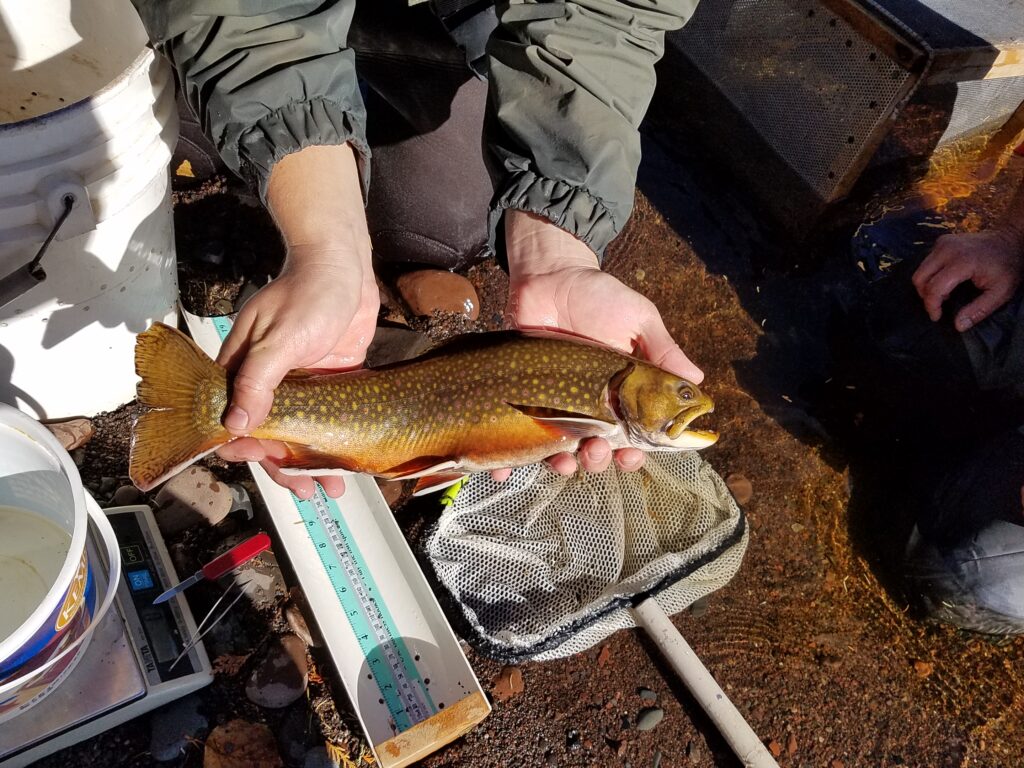
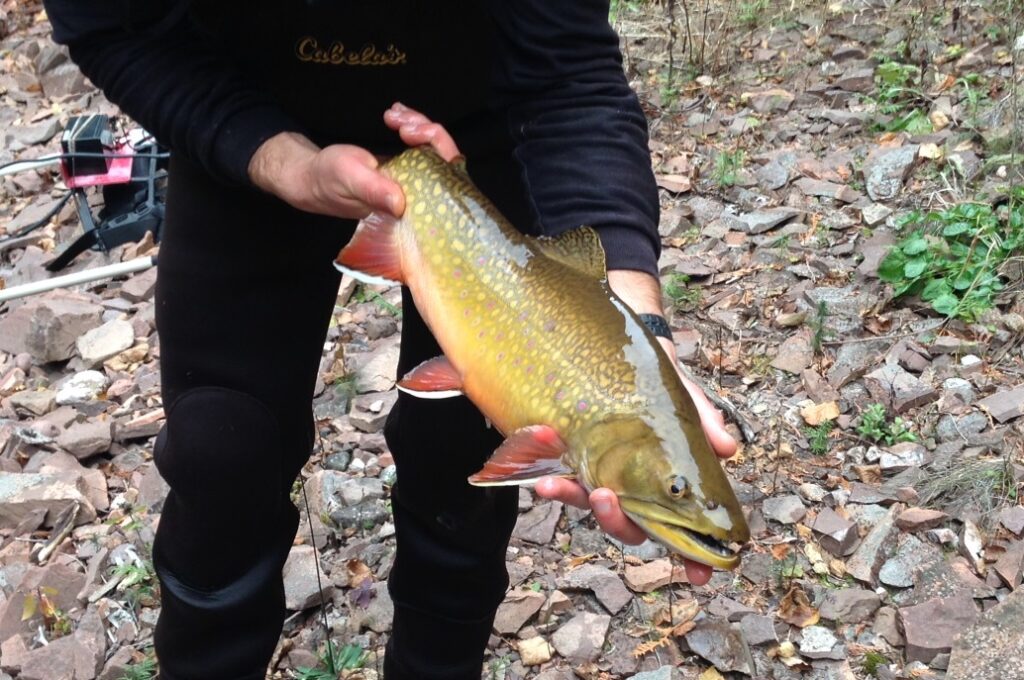
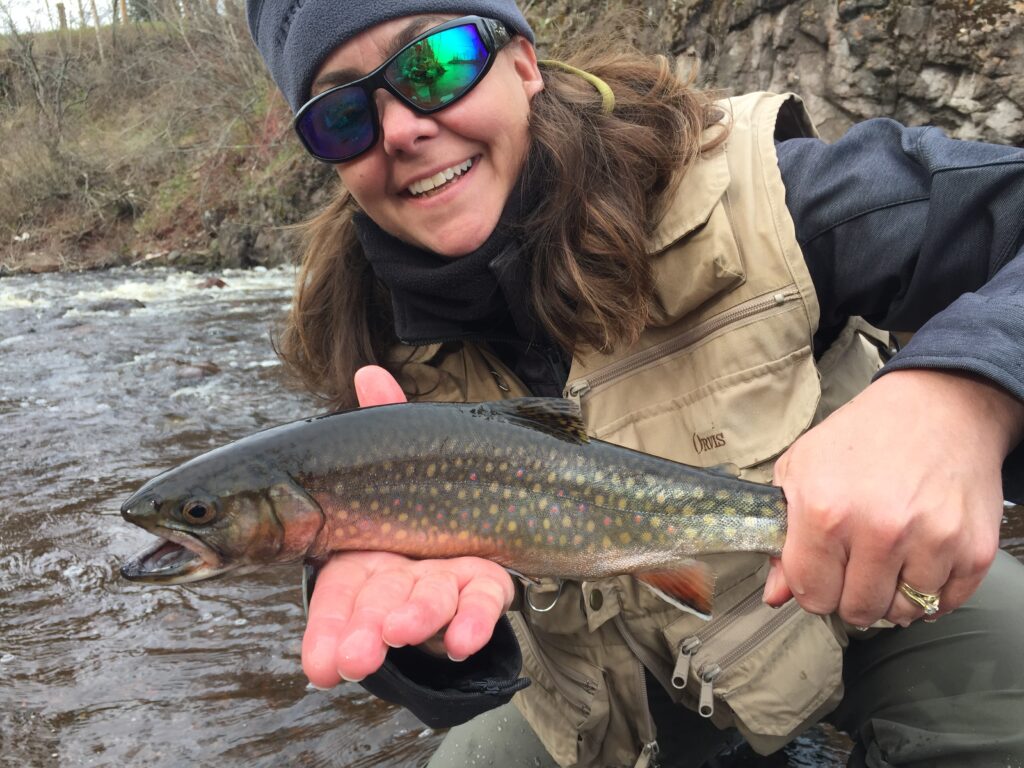
Minnesota, Is It or Isn’t It?: Little is known about the origins and movements of “modern” coaster brook trout in Lake Superior beyond the assumption that they generally fit into the migratory model. The primary problem for all fisheries biologists is that there is virtually no scientific data on a fish and their populations that could be considered “pure coaster” as they existed prior to the 1850’s. Without a comparative model, definition and classification of today’s coaster is difficult at best, even with advances in genetic technology.
Today, fisheries biologists and geneticists in Minnesota and elsewhere are in the early stages of modern coaster brook trout analysis. With hard work and a lot of luck, they may be able to work backwards as it were to determine “What was a coaster?”, which ironically may answer “Is this a coaster?”. Until then, they need your help.
The Coaster Genetics Project is a cooperative “citizen science” project that utilizes permitted and trained volunteer anglers to collect non-lethal tissue samples from brook trout above and below barriers of North Shore tributaries. These samples, which are submitted for genetic analysis, are just one line of important scientific inquiry being used to hopefully solve the coaster mystery. To learn more about this project, see current results, or to get involved, please visit the Coaster Genetics Project page.
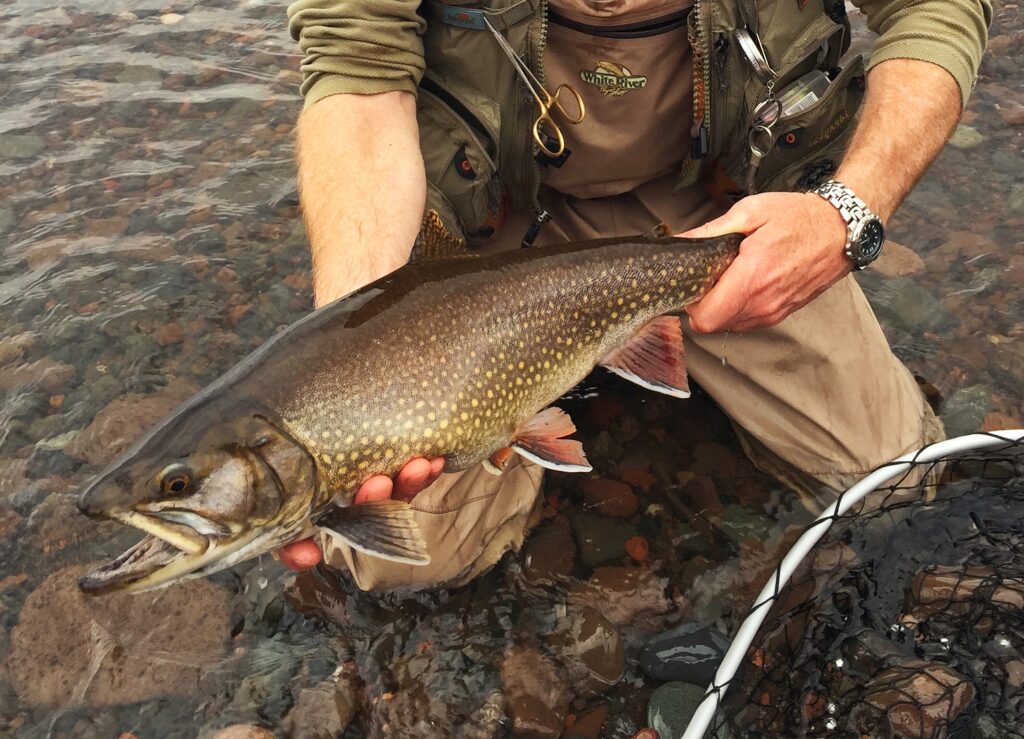
Spawning: Coasters in Minnesota waters may begin staging off river mouths or returning to streams to feed in preparation for the rigors of spawning as early as August. Spawning typically doesn’t begin until late October or November when water temperatures begin falling from the 40’s°F into the 30°F range.
Female egg production is size-dependent, the larger the female, the more eggs she can produce. Egg counts recorded from females sampled in various Ontario and Quebec streams measured anywhere from 138 to 2,300 per female although Nipigon broodstock hatchery numbers were generally greater.
Eggs hatch in 50 to 100 days. The number of days required to hatch coaster eggs is temperature-dependent, with higher temperatures producing shorter hatching times. Water temperatures above 53F are lethal, and eggs will not survive. Young fish emerge from redds typically in March, but may emerge earlier or later depending on latitude.
Diet: Data and information describing the historical diet of coaster brook trout in Lake Superior does not exist. Coaster brook trout in Lake Superior likely fed opportunistically on whatever small fish species and arthropods that were available in nearshore areas. Unpublished studies examined the stomachs of a small sample of hatchery brook trout that had been planted in Keweenaw Bay, Michigan, and found isopods, amphipods, gastropods, a variety of aquatic insects (mostly Diptera), and fish, primarily sticklebacks and sculpins, were the dominant food items.
Coaster Rehabilitation: Coaster conservation and rehabilitation efforts include special regulations on all Minnesota North Shore streams below posted boundaries. The Labor Day closure helps protect spawning fish. The minimum size limit is designed in part to increase both the size of fish within the spawning population (larger females produce more eggs), as well as to increase the chances that individual fish are able to successfully return to streams over multiple year’s spawning runs. Know before you go!

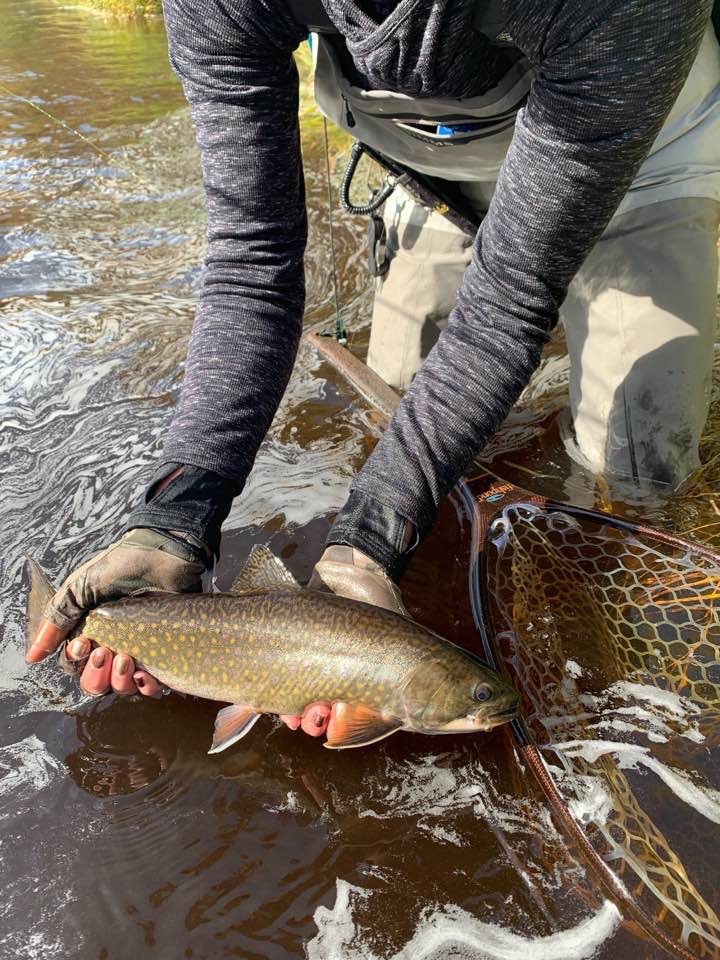
ATTENTION ONTARIO ANGLERS:
Anglers who fish in the Ontario waters of Lake Superior that may be interested in helping to collect data and genetic samples from Brook Trout should reach out to our friend Kyle Stratton with the Ontario Ministry of Natural Resources. Kyle’s email and phone number are listed in this Genetic Sampling Overview document which details what they are looking for in terms of Brook Trout data and tissue sample collection. Kyle will send sampling kits to anglers expressing interest in helping out. Please email, call or text Kyle, Thank You!
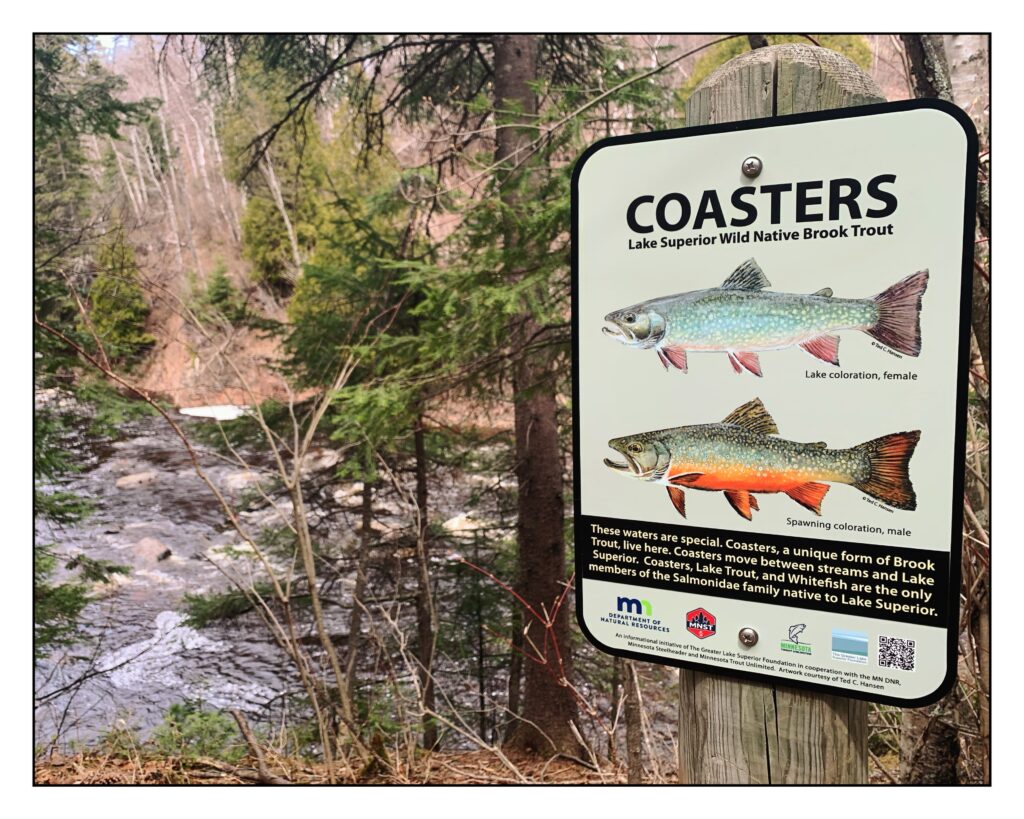
Fishing for Coasters: Coasters are opportunistic feeders, and are frequently caught in proximity to fall-spawning salmon, and spring-spawning steelhead as they gorge on eggs . This behavior provides opportunities for river anglers regardless of season. Coasters certainly are not shy, and will take egg patterns, nymphs, streamers, artificials, hardware and various baits that drift within reach.

Fisheries Management Plan for Minnesota Waters of Lake Superior
This plan is a comprehensive guide on how to best manage Minnesota’s portion of the Lake Superior fishery. The plan is written for use by both the MN DNR Fisheries Management Section and citizens interested in the management of Minnesota’s Lake Superior fishery resource. This plan is based on a fish community approach to fisheries management and highlights why this approach is necessary
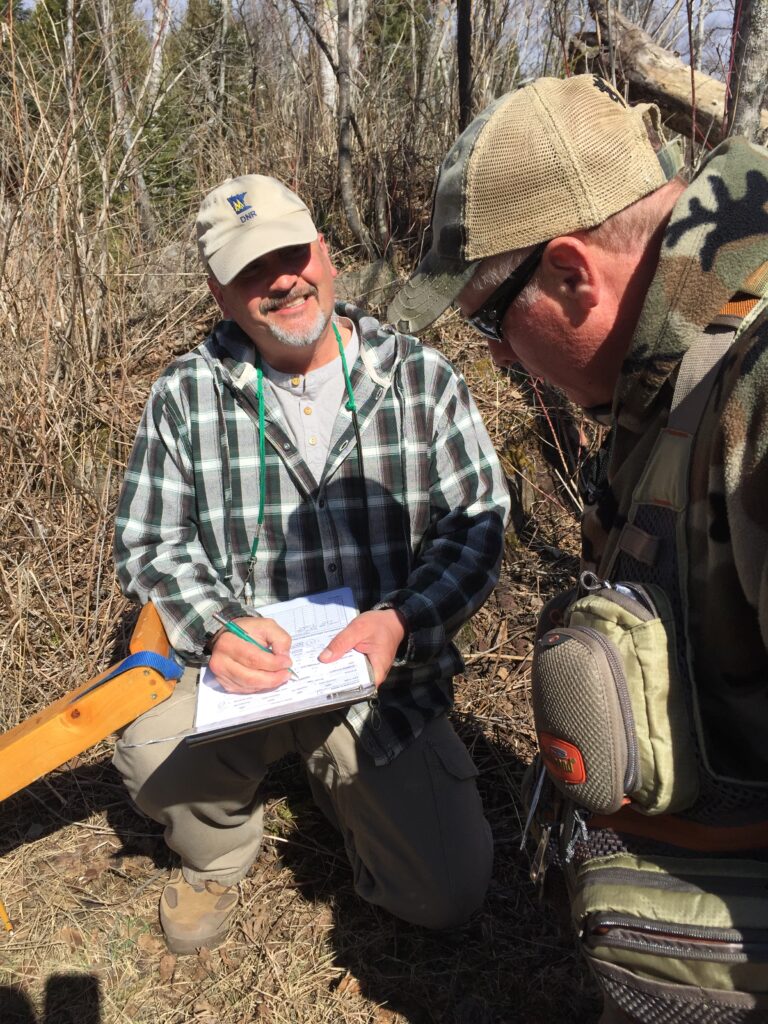
MN DNR Spring Creel Survey
The first spring creel survey was implemented in 1992 to monitor the rehabilitation of Rainbow Trout in Minnesota waters after the species declined in the 1960s. The survey was designed to target anglers who fished for Rainbow Trout as they migrated upstream in tributaries to spawn.
The annual spring creel survey typically begins once tributaries thaw and are fishable. The spring creel survey has provided useful information for many other species in Lake Superior. Brook Trout (Salvelinus fontinalis), one of two native sport fish to Lake Superior, are typically the second most reported species in the spring creel survey.
